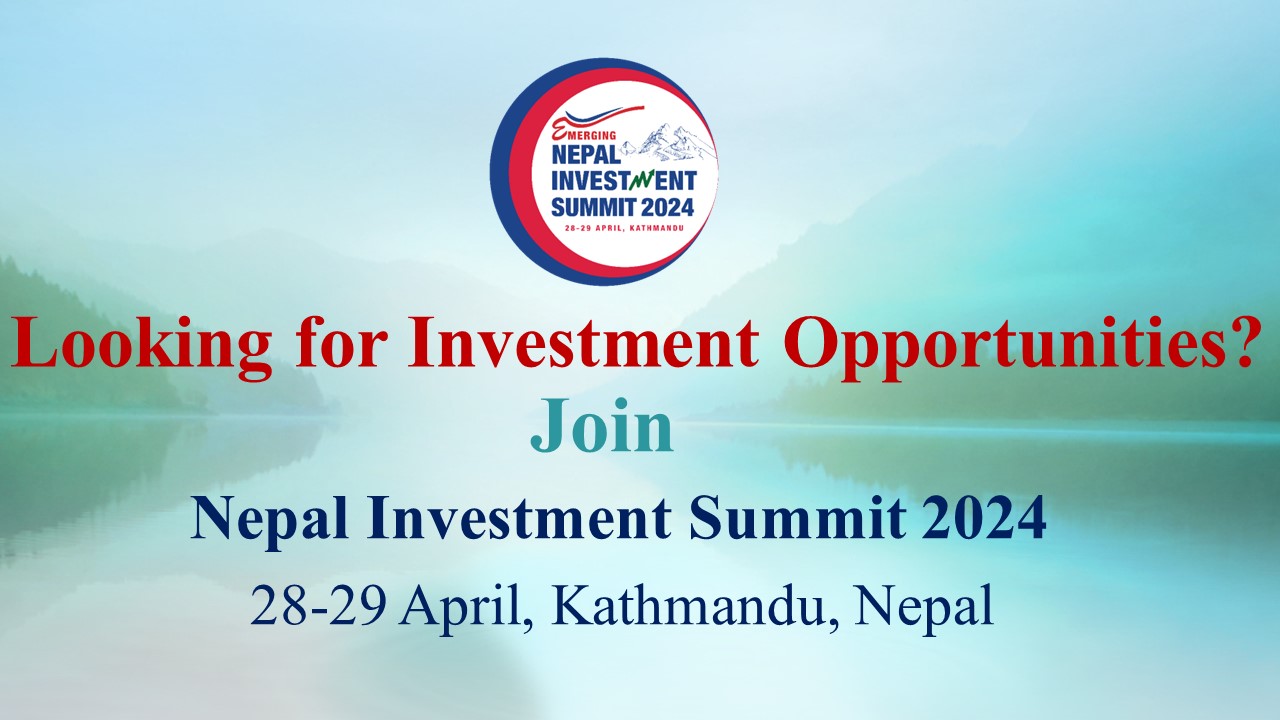Nepal is a land-locked country in South Asia located between China and India, two huge countries with emerging economies. It spreads over an area of 147,516 sq km. Politically, it has been designated as a Federal Democratic Republic country since May 2008. Nepal is officially a secular state. Hinduism is the main religious faith among the majority of the Nepali people. The second largest faith by number of followers is Buddhism as Nepal is the birthplace of Lord Buddha. Christianity and Islam also co-exist peacefully and harmoniously in Nepal. Rich cultural heritage and lively diverse cultural traditions are special features of Nepal. Nepal has a multi-cultural, multi-religious and multi-lingual society.
Nepal is one of the richest countries in the world in terms of bio- diversity due to its unique geographical position and altitudinal variation. Nepal is endowed with rich hydropower potentials with perennial rivers and glaciers flowing from Himalayan ranges. The elevation of the country ranges from 60 m above sea level to the highest point on earth, Mt. Everest at 8848 m, all within a distance of 150 km resulting into climatic conditions from sub-tropical to Arctic. There are eight high mountains including highest mountain of the world.
Nepal has a unique landscape, and a fabulous biodiversity. Occupying only 0.03 percent area of the earth, it is home to:
- 2% of all the flowering plants in the world.
- 8% of the world’s population of birds (over 848 species).
- 4% of the mammals on earth.
- 11 of the world’s 15 families of butterflies (more than 500 species).
- 600 indigenous plant families.
- 319 species of exotic orchids.
- 9 national parks, 3 wildlife reserves, 6 conservation areas, 1 hunting reserves.
- 4 world heritage site( Kathmandu valley, Sagarmatha national park, Chitwan national park, Lumbini)
| Official Name | Nepal |
| Area | 147,516 Sq. Km |
| Location | Situated in South Asia, Nepal joins her northern border with the People’s Republic of China and eastern, southern and western borders with the Republic of India. |
| Political System | Federal Democratic Republic |
| Currency | Nepali Rupee |
| Topography | Geographically, the country is divided into three regions: Mountain: the northern range (Himalaya) is covered with snow over the year where the highest peak of the world, the Mount Everest, stands. Hill: The middle range is captured by gorgeous mountains, high peaks, hills, valleys and lakes. Terai: The Southern range is the gangactic plain of alluvial soil and also consist of dense forest area, national parks, wildlife reserves and conservation areas. |
| Climate | The hill, mid-hills and particularly the Kathmandu valleys are pleasant with warm summers and moderate cool winters. Temperature ranges between maximum of 40 and minimum of 6 degree Celsius in the plains, 28 and 2 degree celsius in Kathmandu valley and 16 and 6 degree celsius in the mountains. The rainy season lasts from June to August. |
| Capital City | Kathmandu, a historical and cultural city located at Kathmandu valley covering an area of 564sq.km.at 1,348m.above sea level. |
| Total Population | 29,164,578 (Census of 2021) with annual growth rate of 0.92 % |
| Official Language | Nepali (with numerous national languages and dialects spoken in the country). English is widely spoken in the capital and other urban and tourist areas. |
| Religion | Secular State; Hinduism and Buddhism are two major religions practiced in Nepal with a majority of the people being Hindus. The other religions practiced in Nepal are Islam, Christianity, Jainism, Sikhism and Bon. |
| Society | Nepal is a multi-ethnic and multi-lingual society with 125 ethnic groups who speak about 123 different languages and dialects. |
| Internet domain | np |
| International dialing code | +977 |
| Outdoor attractions and activities | Mountain climbing, trekking, bird watching, mountain flight, rock climbing, rafting/kayaking/canyoning, hot air ballooning, bungee jumping, paragliding, ultra-light aircraft, mountain biking, jungle safari, entertainment and sports, fishing, honey hunting, boating, village tours etc. |
| Indigenous Products | Pashmina, paubha/thanka, mithila painting, lokta paper, ceramics, leather accessories, khukuri, tea, spices, garments and knit-wears, dhaka, fabrics, musical instruments, music, glass ornaments, jewelry and gems, metal wares, sculptures, wood carvings, rudrakshya (rosary), woolen carpets, root art, shaligram (holy rocks), masks, books etc. |
| Gifts or souvenirs | Bags and accessories, bamboo crafts, fancy hats, nepali dolls, home furnishing, incense, natural buttons, fibre products, wood game boards. |
| What to wear | Light weight clothing is recommended for May through October. Warm garments are required in November- March. An umbrella or a raincoat is a must for the rainy season. |
| Unique Treasures | i) Mt. Everest- Highest Peak on Earth ii) Kumari- The Living Goddess iii) Lumbini- Birthplace of Lord Buddha |

